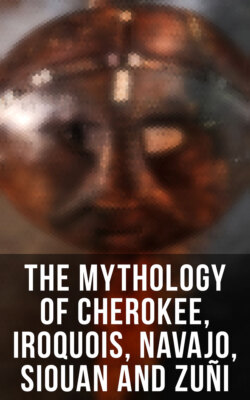Читать книгу The Mythology of Cherokee, Iroquois, Navajo, Siouan and Zuñi - James Mooney - Страница 60
На сайте Литреса книга снята с продажи.
Totemic Law and Custom
ОглавлениеFew generations would elapse before the sense of ancestral devotion to the totem or eponymous forefather of the tribe would become so strong as to be exalted into a fully developed system of worship of him as a deity. That the totem develops into the god is proved by the animal likeness and attributes of many deities in lands widely separate. It accounts for the jackal- and ibis-headed gods of Egypt, the bull-like deities of Assyria, the bestial gods of Hindustan—possibly even for the owl which accompanied the Grecian Pallas, for does not Homer speak of her as 'owl-eyed'? May not this goddess have developed from an owl totem, and may not the attendant bird of night which perches on her shoulder have been permitted to remain as a sop to her devotees in her more ancient form, who objected to her portrayal as a human being, and desired that some reminder of her former shape might be preserved? That our British ancestors possessed a totemic system is undoubted. Were not the clan Chattan of the Scottish Highlands the "sons of the cat"? In the Dean of Lismores Book we read of a tribe included under the "sons to the king of Rualay" one battalion of whom was 'cat-headed,' or wore the totem crest of the cat. The swine-gods and other animal deities possessed by the British Celts assist this theory, as do the remains of many folk-customs in England and Scotland. Our crests are but so many family symbols which have come down to us from the distant days when our forefathers painted them upon their shields or wore them upon their helmets as the badge of their tribe, and thus of its supposed beast-progenitor or protector.
As has been said, a vast and intricate system of tribal law and custom arose from the adoption of totemism. The animal from which the tribe took its name might not be killed or eaten, because of its blood-kinship with the clan. Descent from this ancestor postulated kinship between the various members of the tribe, male and female; therefore the female members were not eligible for marriage with the males, who had perforce to seek for wives elsewhere. This often led to the partial adoption of another tribe or family in the vicinity, and of its totem, in order that a suitable exchange of women might be made as occasion required, and thus to the inclusion of two gentes or divisions within the tribe, each with its different totem-name, yet each regarding itself as a division of the tribal family. Thus a member of the 'Fox' gens might not marry a woman of his own division, but must seek a bride from the 'Bears,' and similarly a 'Bear' tribesman must find a wife from among the 'Foxes.'
